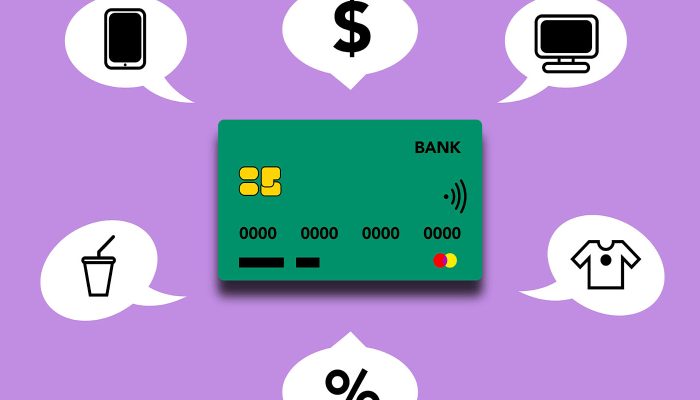AOV: the secret sauce for sustainable growth?
Why is it that often you can return home from a shop with considerably more items than you intended to buy, turning a projected £7 spend into nearly £20?
Let’s walk it through. You grabbed milk and then veered towards the soft drink aisle. Next to the own-brand cola, you spotted those artisanal nuts you enjoy – into the basket they went. Premium cola was on offer, two for £3, a no-brainer. Hanging near the eggs were egg poaching bags, handy for Sunday. En route to the self-checkout, gourmet granola bars caught your eye – you wanted something sweet. Before paying, you added tissues and gum to your basket – always useful.
Sound familiar? That’s cross selling and upselling, techniques honed by many a retailer. Initially planning to spend £7, you ended up spending £17; over 83% more, at very little added cost to the supermarket.
The example above applies to just one customer’s order value. But imagine; these techniques have a similar effect on every single customer that walks through the door.
The primary aim is to increase the customer’s average order value (AOV).
In eCommerce we employ the same techniques during online shopping. And AOV is one of the four levers we look to develop in our clients’ eCommerce growth marketing strategies.
Marginal AOV increases = significant gains
So why does AOV matter so much? Assume the following metrics:
If the AOV before optimisation is £10, and there are 10,000 orders per month, then the total monthly revenue would be £100,000.
Now, after implementing various strategies (which we’ll delve into later), the online business manages to increase the AOV by 10%.
Here’s how the numbers change:
After optimisation the new AOV is £11 – a total monthly revenue of £110,000.
This equates to an increased revenue of £10,000 each month, which means they’ve made an extra £120,000 that year, at almost no extra cost.
Of course this is just a simplified, hypothetical example. In the real world, the impact will vary depending on factors such as customer behaviour, market conditions, and the effectiveness of the strategies employed to increase AOV.
However, it does illustrate how even small improvements in AOV can lead to substantial gains. Powerful stuff, right?
Understanding AOV as a growth lever
Increasing AOV obviously enhances the bottom line but it becomes particularly advantageous if paid media is driving traffic to your website. By maximising the order value per customer, you capitalise on the initial investment made to acquire the customer in the first place.
If your AOV rises from £40 to £50 without any increase in your paid budget, not only is it generating you a higher revenue, but it’s also boosted your Return on Ad Spend (ROAS).
Improving AOV is significant if you want to scale your eCom business, because it allows you to grow revenue without increasing operational costs at the same rate. This means you can expand operations while simultaneously maintaining profitability.
You might also like / people also bought
The above phrases, familiar to seasoned online shoppers, represent one strategy used to boost online AOV. Similar strategies include:
- Upselling
- Pop-ups
- Bundles
- Checkout discounts
Use data to drive strategy
Any good strategy to drive increases in AOV should be supported by insights. Here we’re talking:
- Segmenting customers and customising product recommendations and promotions based on their preferences and purchasing behaviours.
- Personalising product recommendations using browsing history, purchase patterns, and demographic information.
- Implementing dynamic pricing by offering discounts or incentives for bulk purchases based on demand, inventory, and customer behaviour.
- Leveraging sales data to create product bundles from frequently paired items or items purchased together.
- Identifying cross-selling opportunities based on customer interactions and purchase history to prompt relevant suggestions.
Fortunately, plugins on eCommerce platforms such as Shopify and WooCommerce do a lot of the hard work for you by analysing site data and offering suggestions based on the results.
A/B testing is your friend
A/B testing is crucial for eCommerce marketers to analyse the impact of data strategies on AOV and determine how best to implement them.
Testing shipping costs or promotional offer thresholds can also provide insight into factors affecting AOV.
For example, if we were to compare free delivery for purchases over £50 versus £60 we could monitor the results to show us how each threshold affects the AOV and the conversion rate – and subsequently, identify the threshold ‘sweet spot’.
Challenges and considerations
Technological limitations
As an eCommerce business, these plugins might sound like music to your ears, but unfortunately the solution isn’t always as simple as auto-generated cross selling recommendations.
We’ve seen examples where we’ve needed to hand-code the technology into our client’s CMS. Development costs need to be carefully assessed against potential AOV gains.
It’s also worth noting that plugins come with their own associated subscription costs.
Resource constraints
Manual coding can be time consuming and direct resources away from other priorities. This is tricky if you’re a small eCom business with a lean development team. Plus your developers need the technical know-how to be able to code updates.
Resource and technological constraints frequently go hand in hand; you need to prioritise the investment of time and money, and what is going to give you the biggest return.
Conversion rates
AOV and conversion rates are intrinsically linked; there’s often a delicate equilibrium to maintain between boosting order value and preserving a stable conversion rate.
For instance, if you bombard customers with offers at checkout, you risk deterring them altogether.
And when adjusting thresholds for incentives like free shipping, while it might impact AOV positively, it can also result in fewer conversions if set too high.
The Space & Time Approach
We see many varying mindsets and ideas about the importance of AOV. Some don’t realise its significance, others don’t know how to enhance it, while those who run a lean ship are juggling multiple responsibilities and struggle to delve into the detail.
Therefore, our discussions and strategies are always tailored to meet where you are in your eCom journey, your perspective and circumstances.
The key message is that eCommerce entails more than just investing in paid advertising and increasing budgets to scale. It’s about recognising that profitability and growth extends beyond financial force. AOV is just one of the diversifying tactics to achieve this.
This article is part of our ongoing Long-term thinking for Sustainable growth series. The previous instalment focused on three ways to transform your conversion rate. Next month we’ll be looking at the fourth lever – LTV, so do scroll to the bottom of this page to subscribe to our newsletter.
If you’d like to learn more about how we can help increase your ROI in 2024, contact our knowledgeable team today. We’d be delighted to help.





